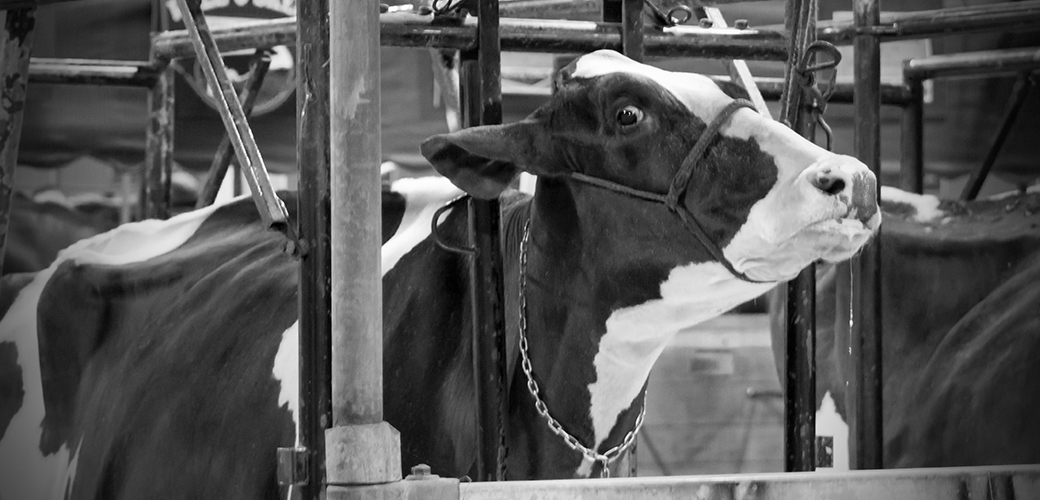

Like scenes out of a horror movie, billions of animals are trapped in a terrifying place … a place lurking with disease … on a toxic landscape scarred by pollution. Scarier still is that the horror of factory farming is deliberately masqueraded as idyllic family farms by trickster marketing designed to keep caring Americans from helping.
This Halloween, we highlight seven scary things about factory farms and two simple ways you can end the nightmare for animals.
1. Frankenchicken
To generate as much profit as possible, animals on industrial farms are pushed beyond their physical limits. Dairy cows and laying hens are bred to produce ever-increasing yields of milk and eggs. Pigs, chickens and turkeys are selected for extreme weight gain. Chickens raised for meat (“broilers”) are so genetically manipulated they are at risk of organ failure, even at a young age–sometimes they are called Frankenchickens or plofkips, a Dutch term meaning exploding chickens.
2. Behind Bars
It is hard to fathom a housing system more inhumane for highly intelligent and sociable animals than gestation crates. A gestation crate is a 7’x2’ cage with bars on four sides and a concrete floor where female pigs are housed during their pregnancies. Pigs cannot turn around or lie down without their limbs protruding into another pig’s crate.
3. Amputations
It is almost unimaginable that healthy body parts of chickens, cows, pigs and turkeys are routinely cut off, but this is exactly what happens on factory farms. Rather than give the animals enough space to prevent fighting and other harmful behaviors, parts of beaks, tails, teeth and toes are removed routinely—without any pain relief.
4. Breeding Grounds for Disease
Factory farms are warehouse-like buildings–housing thousands or tens of thousands of animals in close confinement–making them the perfect breeding grounds for disease. To counter the filth, antibiotics are heavily relied on to keep animals alive and growing, despite the sickening conditions. The overuse and misuse of antibiotics has spurred the development of antibiotic-resistant superbugs, a terrifying threat to sick animals and to people.
5. Toxic Environments
Large numbers of animals housed in a concentrated area means a large concentration of waste. Fragile waste management strategies like manure lagoons, coupled with the release of more than 400 types of toxic gases, deeply compromises the health and well-being residents living near factory farms, with the burden most heavily placed on the economically disadvantaged and minority populations living in these rural communities. Factory farms also rely on massive amounts of water and fossil fuel resources, all while marketing sustainability.
6. Unsafe Working Conditions
Workers on farms and in slaughterhouses are among the lowest-paid laborers in the United States, yet they face some of the highest risk for injury, illness and exploitation. While the factory farm industry generates handsome profits, workers have been reportedly denied bathroom breaks, endured grossly unsafe working conditions during the pandemic, and are made to use increasingly fast slaughter-line machinery that puts their lives and limbs at risk every day.
7. Silencing
The inhumane, unjust and unsustainable factory farming model is pushed upon the rural American landscape and seeks to operate with no consequences through “Right to Farm” laws, silencing whistleblowers through ag-gag laws. In addition, the new EATS Act strips states of the right to create progressive agricultural legislation.
There is much to scream about when it comes to factory farming, but it doesn’t have to be this way.
Please lend your support: contact your member of Congress about the Farm System Reform Act, and join us in the movement to seek out alternatives that respect animals, land, workers and their local communities. No matter what you eat, get started by learning how to Shop With Your Heart and feel empowered by our easy-to-use resources.
Source: Read Full Article



